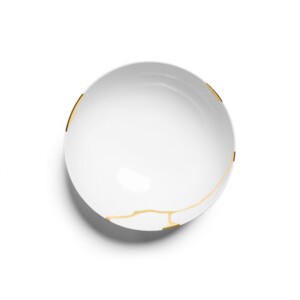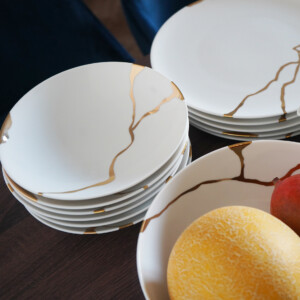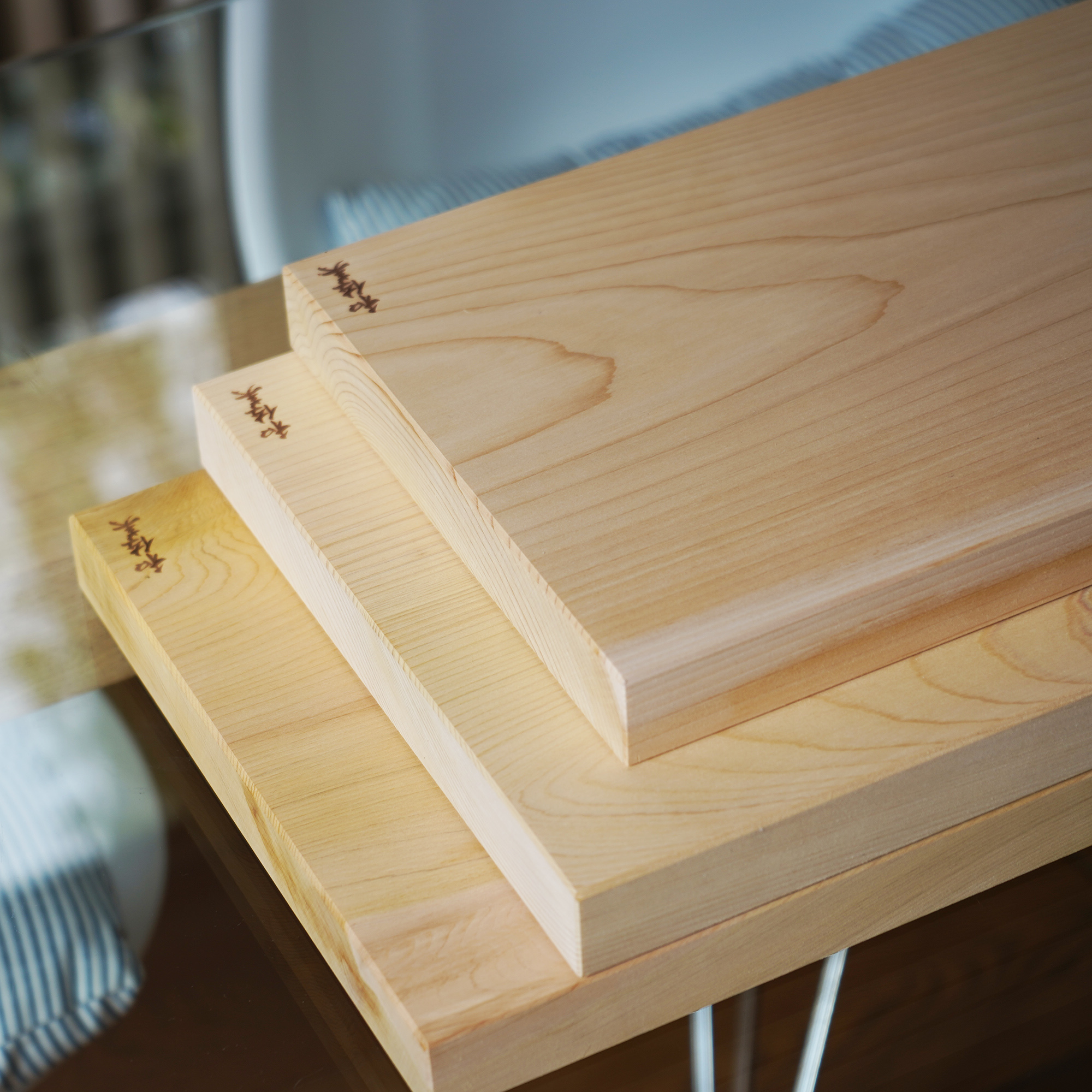Konnichiwa, tea lovers! As a team of all-Japanese enthusiasts, whether it’s knives or food and beverages, we have a soft spot for the many wonderful varieties of Japanese green tea. From delicate and floral to bold and robust, there is a green tea out there for everyone. In this article, we’ll be sharing all you need to know about Japanese green tea, including its history, varieties, health benefits, and tips for brewing the perfect cup. Uff, a lot of good stuff, so let’s get started.
History of Japanese Green Tea Green tea has been a part of Japanese culture for centuries, with the first recorded cultivation of tea plants dating back to the 8th century. Interestingly, green tea was originally consumed as a medicine rather than a beverage, and it wasn’t until the 12th century that the Zen Buddhist monk Eisai introduced tea to Japan as a recreational drink.
In Japan, green tea is not only consumed as a beverage, but it is also used in cooking and baking. For example, green tea powder (matcha) is often used as a flavouring in desserts like ice cream, cakes, and even chocolate. While green tea is typically associated with Japanese culture, it is also grown and consumed in other parts of the world, including China, Taiwan, and Korea. However, Japanese green tea is often considered to be among the finest in the world, thanks to its high quality and distinct flavour profiles.
The antioxidants in green tea are not only good for your body, but they can also help preserve the flavour and freshness of the tea itself. This is why high-quality green tea is often packaged in airtight containers to protect it from oxidation and other contaminants.
In Japan, green tea is often consumed with traditional Japanese sweets known as wagashi, which are made from ingredients like sweet beans, rice flour, and sugar. The quality and flavour of green tea can vary depending on factors like the location of the tea fields, the time of year the tea is harvested, and the processing methods used. Green tea can be used to flavour and scent other foods and beverages, such as soba noodles, ice cream, and even beer.
While green tea is generally considered to be a healthy beverage, it is not suitable for everyone. People who are sensitive to caffeine or who are taking certain medications may need to limit their intake of green tea or avoid it altogether. It’s always a good idea to consult with a healthcare provider before making any changes to your diet or lifestyle.
Varieties of green tea
Varieties of Japanese Green Tea There are several varieties of Japanese green tea, each with its own unique flavour and character. Here are some of the most popular:
- Sencha – Sencha is the most common variety of Japanese green tea. It has a fresh, grassy flavour and aroma and is enjoyed both hot and cold. Did you know that sencha is the tea of choice for many Japanese people, and is often served with meals to aid digestion?
- Gyokuro – Often referred to as the “king of green tea,” gyokuro is a premium tea that is shaded for several weeks prior to harvesting. This results in a sweeter, more delicate flavour and aroma. Fun fact: gyokuro is said to have been a favourite of samurai warriors, who valued its health benefits and energising properties.
- Matcha – This powdered green tea is made from shade-grown tea leaves that are ground into a fine powder. It is used in traditional Japanese tea ceremonies and has a rich, earthy flavor. Did you know that matcha is also popular in western countries, where it is used as an ingredient in smoothies, desserts, and even cocktails?
- Bancha – Bancha is a lower-grade green tea that is made from mature tea leaves. It has a slightly bitter taste and is often served as an accompaniment to meals. Fun fact: in Japan, bancha is sometimes referred to as “poor man’s tea,” as it is less expensive than other varieties of green tea.
Health Benefits of Japanese Green Tea
Japanese green tea is known for its many health benefits, thanks to its high levels of antioxidants and other beneficial compounds. Some of the benefits of drinking green tea include:
- Boosting metabolism – Green tea contains compounds that can help increase metabolism, making it a popular choice for those looking to lose weight.
- Reducing the risk of cancer – The antioxidants in green tea have been shown to help reduce the risk of cancer by protecting cells from damage.
- Improving brain function – Green tea contains caffeine and other compounds that can help improve brain function and increase alertness.
Green tea contains a natural chemical compound called EGCG (epigallocatechin gallate), which is known to have anti-inflammatory and anti-cancer properties. The polyphenols in green tea can help promote healthy skin by reducing inflammation and protecting against UV damage. The caffeine content in green tea is much lower than that in coffee, but it still provides a small boost in energy without causing the jitters or crashes often associated with coffee.
The umami flavour in green tea comes from the amino acid theanine, which is also responsible for the tea’s calming effects.
Green tea can help freshen breath and improve dental health by inhibiting the growth of bacteria that cause bad breath and cavities.
Tips for Brewing the Perfect Cup of Japanese Green Tea
To brew the perfect cup of Japanese green tea, follow these tips:
- Use high-quality tea – For the best flavor, use high-quality Japanese green tea.
- Use fresh, cold water – Fresh, cold water is essential for brewing green tea. Avoid using tap water, which can contain impurities that can affect the taste of the tea.
- Steep for the right amount of time – Steeping time can vary depending on the variety of green tea. As a general rule, steep sencha for 1-2 minutes, gyokuro for 2-3 minutes, and matcha for 1-2 minutes.
- Use the right temperature – Water temperature can also affect the taste of green tea. Use water that is around 70-80°C for sencha and bancha, and 50-60°C for gyokuro.
Enjoy with food – Japanese green tea is often enjoyed with food, and can help aid digestion. Try pairing sencha with sushi or sashimi, gyokuro with delicate pastries, or bancha with savoury dishes like grilled meats or vegetables.

Why does drinking green tea makes me thirsty?
Green tea has a bit of tannins in it. The tannins will feel like they are drying out your mouth (just like a red wine with tannin). That will make you feel thirsty.
The reason that you feel thirsty or develop a sore throat after drinking green tea is because of the quality of the tea and the water it’s brewed in. As green tea has a lesser amount of caffeine I disagree that caffeine is causing dryness. Try using a different brand and use organic green tea to rule out the pesticide contamination that ordinary green tea may be having.
Brewing: Use a fine quality green tea and do not brew for more than 1 or 2 minutes. Some experts even recommend throwing away the first lot of water after flushing the tea with it. This should wash away some of the tannins and the second brew will be a lot better.
In conclusion, Japanese green tea is a delicious and healthy beverage that has been a part of Japanese culture for centuries. With its many varieties and health benefits, there is something for everyone to enjoy. So go ahead, brew yourself a cup of Japanese green tea, sit back, and relax!
What's the difference between matcha and green tea?
Matcha and green tea are two types of tea that have become popular in recent years due to their potential health benefits. Although both come from the Camellia sinensis plant, they differ in their cultivation, processing, taste and preparation methods.
Green tea is made from young leaves of the tea plant that are steamed and dried before being rolled and dried again. This process helps to preserve the natural colour and flavour of the tea leaves. The resulting tea is often characterised by its light green colour and refreshing taste. Green tea can be found in loose leaf form or in tea bags and is typically brewed by steeping the leaves in hot water.
Matcha, on the other hand, is made from shade-grown tea leaves that are ground into a fine powder. The tea leaves are covered with shade cloths for several weeks before being harvested, which helps to increase the chlorophyll content of the leaves and give them a deep green colour. After harvesting, the leaves are steamed and dried before being ground into a fine powder using a stone mill. Matcha has a unique flavour profile that is often described as vegetal, earthy and slightly bitter. It can be prepared by whisking the powder with hot water and is often used in traditional Japanese tea ceremonies.
One of the main differences between matcha and green tea is their caffeine content. Matcha contains more caffeine than green tea because it is made using the entire tea leaf, whereas green tea is made using only the brewed water. This means that matcha can provide a more sustained and energising effect than green tea.
Another difference between matcha and green tea is their nutrient profile. Matcha is particularly high in antioxidants, including catechins and epigallocatechin gallate (EGCG), which are believed to have anti-inflammatory and cancer-fighting properties. Green tea also contains these antioxidants, but in lower concentrations than matcha.
- Rated 5.00 out of 5$1,165
- Rated 4.67 out of 5$118
- Rated 4.67 out of 5$353
- Rated 4.67 out of 5$353


































